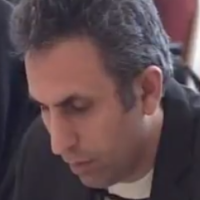Spatial Orientation in Persian Language
Author(s):
Article Type:
Research/Original Article (دارای رتبه معتبر)
Abstract:
One of the most important issues in cognitive linguistics is Spatial Orientation. Languages use sources such as human body (body-part), landmarks, dynamic concept (typically motion verbs like come, go, etc.) and cardinal direction to conceptualize spatial and geographic directions. Every language uses the whole or some of these sources based on its historical and cultural issues. The present study sought to consider the features and sources of Spatial orientation in Persian language based on of Heine’s (1997) theory. The results of the study indicated that Persian language employs human body and animal body (anthropomorphic and zoomorphic model) as the main source of conceptualization, since the bodily experience in space serves as the basis for the majority of metaphorical expressions. The next source was Landmarks (environment – specific features) such as rivers, mountains and rocky places, sea and trees and other related properties. The third and final sources were motion and cardinal directions respectively
Keywords:
Language:
Persian
Published:
Journal of Language Science, Volume:6 Issue: 9, 2019
Pages:
119 to 148
https://www.magiran.com/p2047394
سامانه نویسندگان
مقالات دیگری از این نویسنده (گان)
-
Diachronic Investigation of Persian Kinship Terminology
Elaheh Fathian *,
Journal of Linguistics & Khorasan Dialects, -
Hopelessness and hopefulness rate in Iranian society over the last fifty years: A cognitive view
Mehrdad Meshkinfam*, Mehrdad Naghzguy-Kohan
Advances in Cognitive Science, Spring 2023


